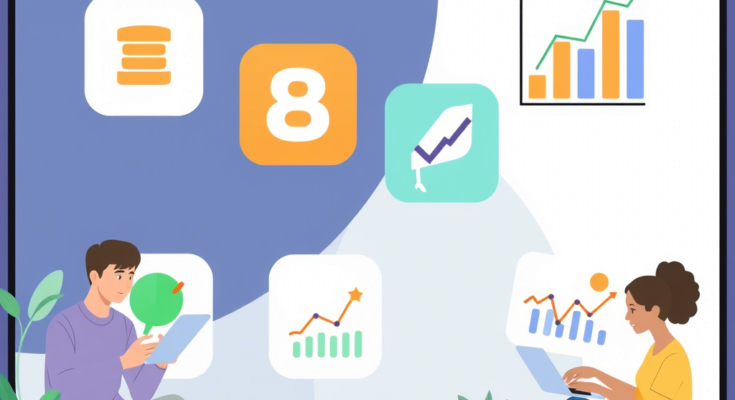Microsoft Office Suite is one of the most widely used productivity tools globally. Whether you’re a student, professional, or entrepreneur, mastering Word, Excel, PowerPoint, and Outlook can significantly enhance your efficiency and effectiveness. In this guide, we’ll walk you through getting started with each application in under an hour while focusing on quality content, SEO optimization, user experience, and more.
Why Learn Microsoft Office Suite?
Before diving into the specifics, it’s essential to understand why learning Microsoft Office Suite is valuable:
- Versatility: These applications are used across industries for tasks ranging from document creation to data analysis.
- Professional Growth: Proficiency in Office Suite boosts employability and productivity.
- Collaboration: Tools like Word and Excel integrate seamlessly with cloud services like OneDrive and SharePoint, enabling teamwork.
Now, let’s break down how to start with each tool efficiently.
Step 1: Mastering Microsoft Word (15 Minutes)
What Is Microsoft Word?
Microsoft Word is a word-processing program designed for creating documents such as reports, letters, resumes, and essays.
Quick Start Guide:
- Create Your First Document
- Open Word and select “Blank Document.”
- Familiarize yourself with the ribbon interface at the top, which includes tabs like Home, Insert, Design, etc.
- Basic Formatting
- Use the Font section to change text size, style, and color.
- Highlight essential sections using bold (Ctrl + B), italic (Ctrl + I), or underline (Ctrl + U).
- Insert Elements
- Add images by clicking Insert > Pictures.
- Use tables for structured data via Insert > Table.
- Save and Share
- Save your work by pressing Ctrl + S or using File > Save As.
- Export files as PDFs for easy sharing: File > Save As > PDF.
Tips for Efficiency:
- Use keyboard shortcuts like Ctrl + Z (undo) and Ctrl + Y (redo).
- Leverage templates to save time when starting new projects.
Step 2: Navigating Microsoft Excel (15 Minutes)
What Is Microsoft Excel?
Excel is a spreadsheet application ideal for organizing, analyzing, and visualizing data.
Quick Start Guide:
- Understand the Layout
- Rows run horizontally, and columns run vertically. Each cell has a unique address (e.g., A1, B2).
- The Formula Bar displays the content of the selected cell.
- Enter Data
- Type values directly into cells or use formulas for calculations. For example, type =SUM(A1:A5) to calculate the sum of cells A1 through A5.
- Format Cells
- Adjust number formats (currency, percentage) via Home > Number.
- Apply borders and shading for better readability.
- Visualize Data
- Create charts by selecting your data range and choosing Insert > Recommended Charts.
- Save and Protect
- Regularly save your workbook.
- Password-protect sensitive sheets via Review > Protect Sheet.
Tips for Efficiency:
- Learn essential functions like SUM, AVERAGE, COUNT, and IF statements.
- Freeze panes to keep headers visible while scrolling.
Step 3: Creating Presentations with PowerPoint (15 Minutes)
What Is Microsoft PowerPoint?
PowerPoint helps users create visually appealing presentations for meetings, lectures, and pitches.
Quick Start Guide:
- Choose a Template
- Start with pre-designed templates under File > New to save time.
- Add Slides
- Click New Slide to add additional slides. Choose layouts that suit your content (title slide, bullet points, image placeholders).
- Customize Content
- Replace the placeholder text with your information.
- Insert visuals like images, shapes, and icons via the Insert tab.
- Apply Transitions and Animations
- Enhance engagement by adding slide transitions (Transitions Tab ) and animations (Animations Tab ).
- Practice Delivery
- Use Presenter View during live presentations to view notes privately.
Tips for Efficiency:
- Keep slides concise; avoid cluttering them with too much text.
- Rehearse timings to ensure smooth delivery.
Step 4: Managing Emails with Outlook (15 Minutes)
What Is Microsoft Outlook?
Outlook is an email client offering calendar, task management, and contact organization features.
Quick Start Guide:
- Set Up Your Account
- Enter your email credentials to connect your account.
- Compose Emails
- Click New Email, enter recipients’ addresses, subject line, and message body.
- Attach files using the paperclip icon.
- Organize Inbox
- Create folders to categorize emails.
- Use rules to sort incoming messages automatically.
- Schedule Meetings
- Go to the Calendar tab and click New Appointment.
- Invite attendees and set reminders.
- Stay Productive
- Utilize the To-Do bar to track tasks and deadlines.
Tips for Efficiency:
- Enable Focused Inbox to prioritize critical emails.
- Use keyboard shortcuts like Ctrl + R to reply quickly.
Optimizing User Experience and SEO
To make this article effective for readers and search engines alike, consider these strategies:
Content Quality
- Provide actionable steps and practical examples.
- Avoid jargon; explain technical terms clearly.
Keyword Optimization
- Include relevant keywords naturally throughout the text, such as “Microsoft Office Suite,” “productivity tools,” “Excel formulas,” and “PowerPoint tips.”
Formatting and Design
- Use headings, subheadings, bullet points, and numbered lists for readability.
- Incorporate visuals like screenshots or infographics where possible.
Backlink Strategy
- Internally link to related articles on your website.
- Build external backlinks by guest posting on reputable sites about productivity software.
Adsense Eligibility
- Ensure compliance with Google policies by avoiding prohibited content (e.g., adult themes, hate speech).
- Focus on providing value to build trust with both users and advertisers.
Building a Content Strategy
A strong content strategy ensures long-term success. Here’s how to approach it:
- Identify Audience Needs: Research common challenges beginners face in using Microsoft Office.
- Plan Topics: Develop follow-up articles on advanced features, troubleshooting tips, and industry-specific use cases.
- Promote Engagement: Encourage comments, shares, and feedback to foster community interaction.
Conclusion
Learning Microsoft Office Suite doesn’t have to be overwhelming. By dedicating just an hour to exploring Word, Excel, PowerPoint, and Outlook, you can gain foundational skills that will serve you well in various scenarios. Practice regularly, leverage online resources, and stay updated on new features.
By following the outlined steps and implementing our content optimization strategies, you will not only empower yourself with essential digital skills but also create high-quality, SEO-friendly material that attracts readers and advertisers alike.




